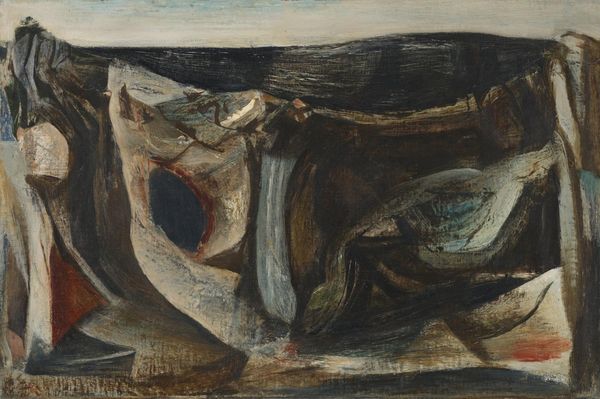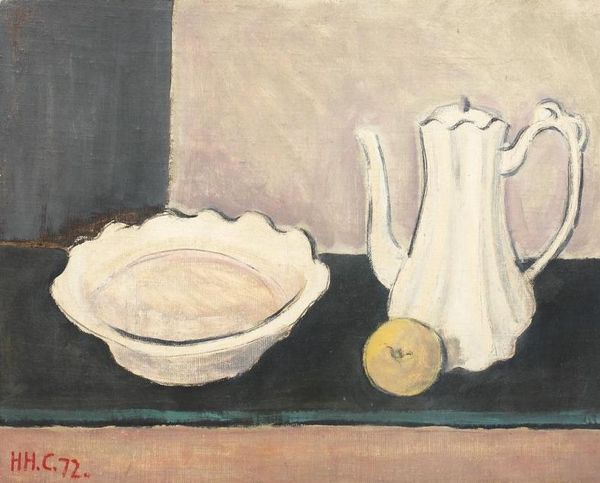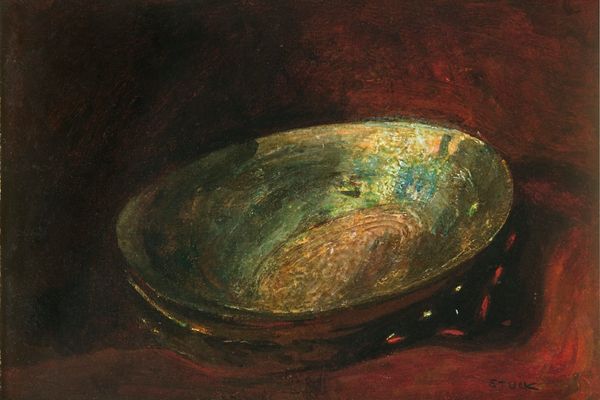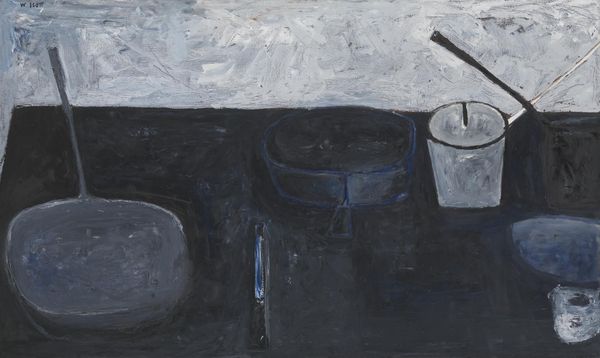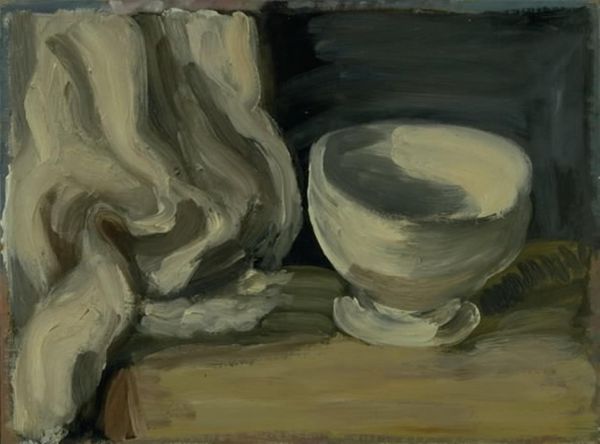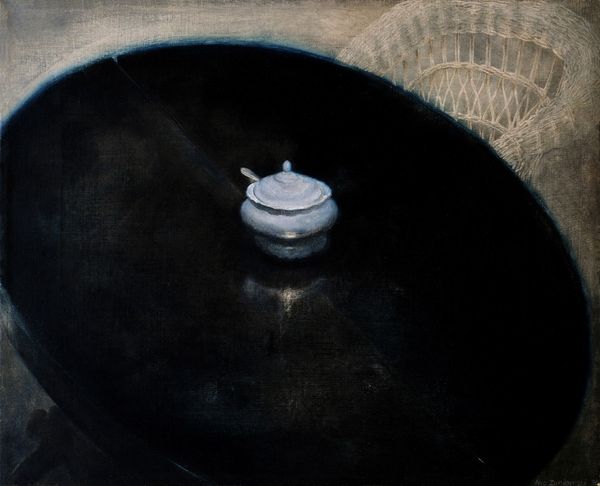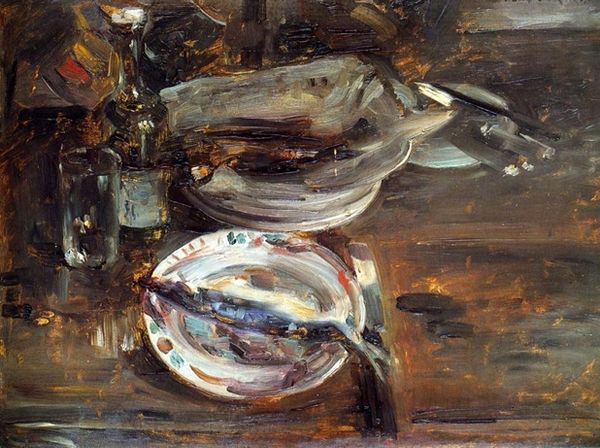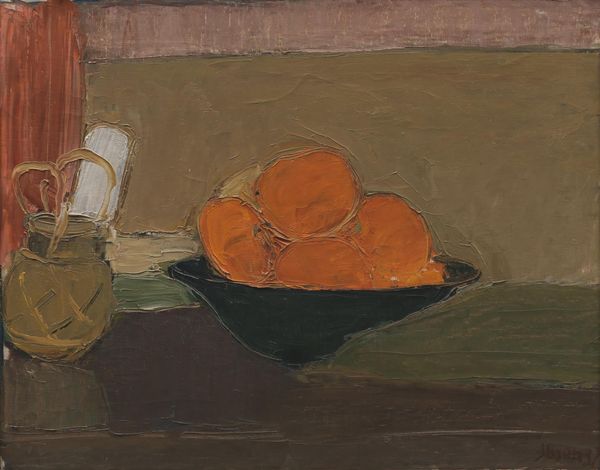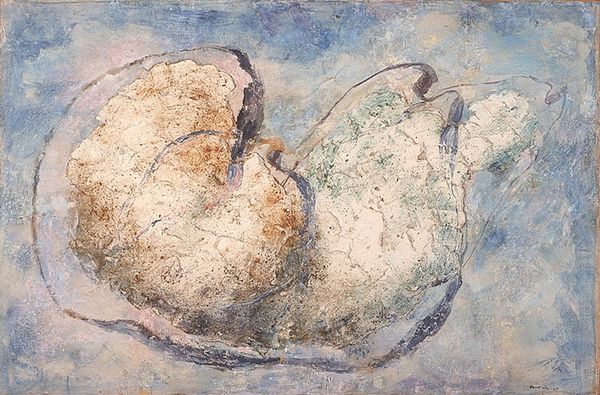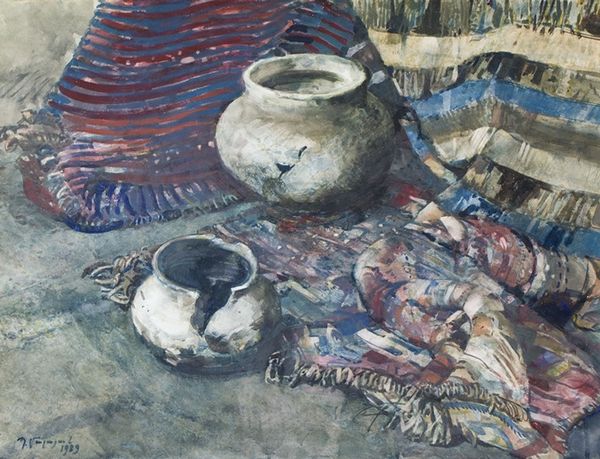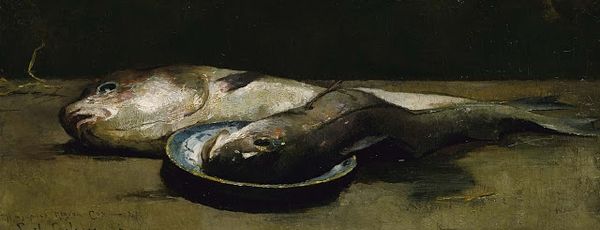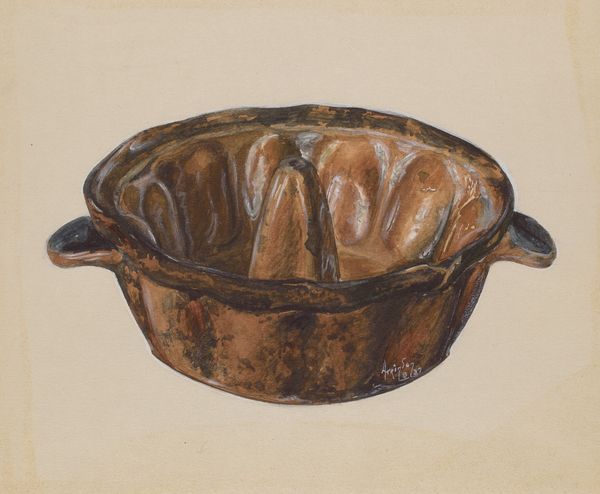
Dimensions: support: 559 x 762 mm frame: 752 x 960 x 100 mm
Copyright: © The estate of William Scott | CC-BY-NC-ND 4.0 DEED, Photo: Tate
Editor: This is "Mackerel on a Plate" by William Scott. The simple composition of the fish against that stark background really draws me in. What do you see in this piece? Curator: The composition demonstrates a reduction to essential forms. The interplay of light and shadow is crucial. Note how the artist uses a limited palette to emphasize shape and texture. Editor: So, the dark background isn't just background, but a way to highlight form? Curator: Precisely. Consider also the materiality: the visible brushstrokes, the layering of paint. How does that contribute to your understanding? Editor: I guess it emphasizes the physical act of painting, not just representation. Thanks, that's really helpful. Curator: Indeed. It underscores the constructed nature of the image itself.
Comments
tate 8 months ago
⋮
http://www.tate.org.uk/art/artworks/scott-mackerel-on-a-plate-n06245
Join the conversation
Join millions of artists and users on Artera today and experience the ultimate creative platform.
tate 8 months ago
⋮
Describing his paintings, Scott said 'I find beauty in plainness, in a conception which is precise, a simple idea which to the observer must inevitably shock and leave a concrete image on the mind.' He became interested in painting realist still-lifes in the 1930s, often portraying the kitchen implements that he kept around his studio. He considered his work to be influenced by the French still-life tradition, particularly the eighteenth-century artist Chardin. As he developed, the objects became flatter and later in the 1950s became abstract shapes. Gallery label, August 2004
